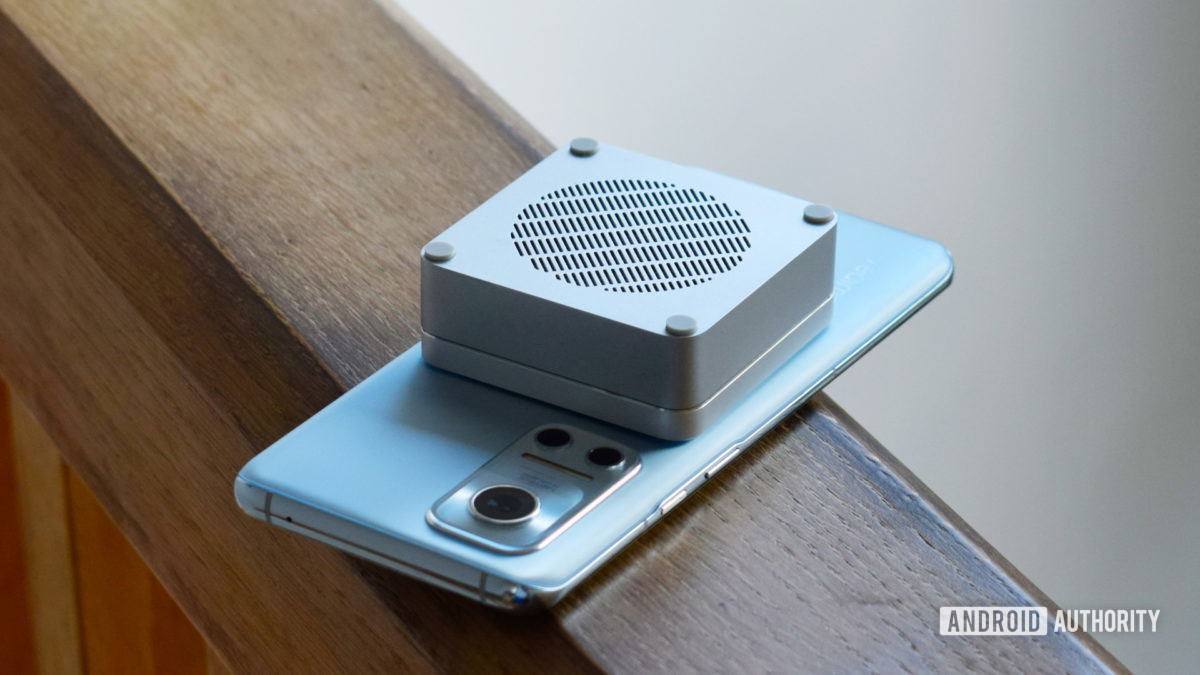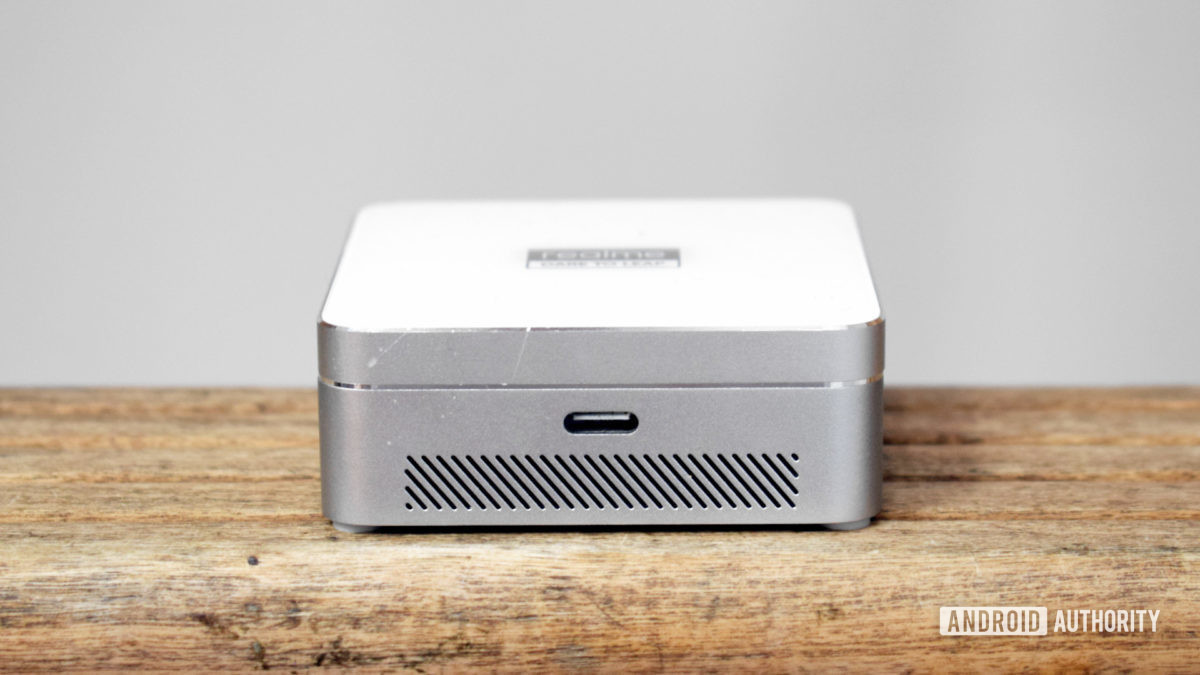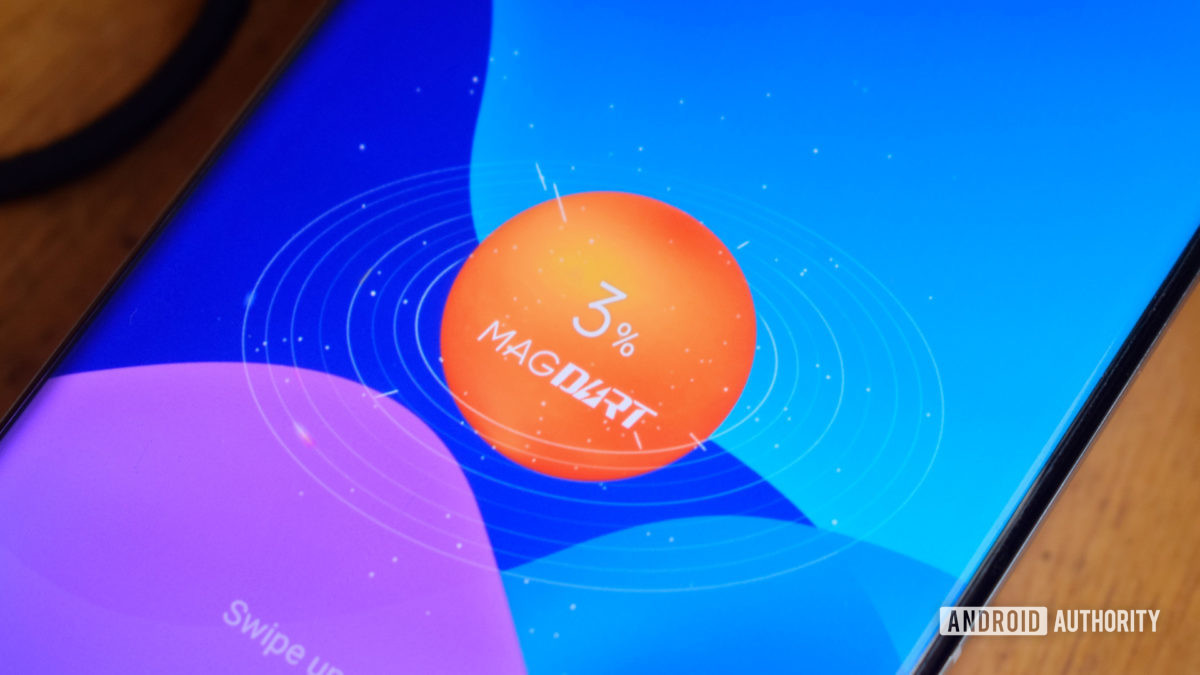
Realme MagDart is the first Android equivalent to Apple’s MagSafe, with the added promise of wired charging speeds over the air. In fact, Realme calls it the world’s fastest magnetic wireless charger. Apple’s MagSafe charges at a rather sluggish 15W while Realme’s MagDart hits peak speeds of over 50W — although, as we’ll see later, its typical charging speeds are a little more modest.
In addition to wireless charging, Realme is utilizing the same magnetic connection for its MagDart Beauty Light, a 60-LED selfie light ring. There’s also a MagDart Wallet, a MagDart Case for the Realme GT, and MagDart Power Bank accessories. Realme hasn’t listed price information, release dates, or regional availability for any of its MagSafe lookalikes yet. The company’s only smartphone with the technology built-in is a concept phone called the Realme Flash, which we’re using for today’s test. But again, there’s no release information available.
Even so, can Realme’s MagDart wireless charger live up to the promise? Let’s find out.
Realme MagDart: What you need to know

The Realme MagDart wireless charger is thicker than your typical puck-sized hub. It’s more of a charging block, owing to the inclusion of a fan designed to keep both the charger and connected smartphone cool. The fan spins up while fast-charging and you’ll definitely notice the noise on your desk. It’s not loud but it’s far from discreet. The concept smartphone we have offers a Quiet Charging option to slow down the fan at the expense of charging power and speed.
It’s not loud but it’s far from discreet.
There’s a USB-C connector on the brick, which supports Realme’s proprietary 65W SuperDart wired charger for the fastest speeds. It plays nicely with USB Power Delivery plugs too, albeit with less power and slower charging speeds as a result. Just like the iPhone solution, Realme makes use of a ring of magnets to secure your phone to the charger and precisely align the wireless charging coils. It’s this precision, along with a beefy coil and plenty of current, that allows the MagDart to provide up to 50W of power over the air. As with all wireless chargers, there’s some power loss over the air, but this is still one of the fastest wireless chargers around that, at least on paper, rivals the fastest wired charging power capabilities too.
For the traditionalists, Realme also has a 15W MagDart wireless charger sporting a more familiar puck-like design. Realme claims this is the thinnest product on the market, and it’s 26.4% thinner than Apple’s MagSafe equivalent. Realme states that it’s faster too, but for today’s test we’re more interested in the bigger, more powerful 50W model.
Realme MagDart wireless charging tested
To test Realme’s claims and the capabilities of the 50W MagDart charger I added an extra layer of data to our usual tests when powering up the concept phone’s 4,500mAh battery. In addition to battery and temperature statistics, I also tracked the voltage and current sent to the wireless charger to keep an eye on the amount of power used. So let’s dive into the key metrics.
- Time to 100% battery: 54 minutes
- Time to 50% battery: 23 minutes
- Maximum Power: 54.0W
- Average Power: 25.7W
- Maximum Temperature: 42.5°C (108.5°F)
- Average Temperature: 40.1°C (104.18°F)
At 54 minutes to a full charge, MagDart is very fast. In fact, that’s as fast as many smartphones charge using a wired connection — although it’s still notably slower than some of the fastest charging smartphones that can hit full in nearly half this time. Traditional wireless charging at 15W typically takes a couple of hours or more to fully charge a smartphone, making it more suitable for small top-ups than a full charge cycle. MagDart definitely challenges that old paradigm.
Taking a closer look at the charging data (see below), the wireless charger also doesn’t quite hit the 50% mark as fast as wired standards. Its charging curve is more linear than fast wired charging, which leverages a battery’s high-current handling capabilities for faster charging at lower capacities. Wireless charging runs just as hot, if not hotter than wired charging too. Realme’s technology hits the dreaded 40°C mark inside three minutes. Temperatures only peak at 42.5°C, but the battery spends its entire charging time in the red zone, which really isn’t ideal.
In addition to using a fan in the charger to combat this higher temperature, MagDart drastically lowers its charging power after an initial fast boost. The headline 50W of juice is sustained for only the first minute of charging, before falling to 45W for a couple of minutes, then 33W, 28W, and finally around 23W. Very high levels of power are sustained for less than five minutes, which is a little disappointing given the way MagDart is marketed.
See also: The best phones with wireless charging capabilities
Ultimately, this reduction in power is necessary to keep temperatures under control. Interestingly, the power creeps up slowly again once the battery temperature begins to fall as capacity fills up. The average power provided over an entire charge cycle is closer to 25W — roughly half the listed amount. That being said, this is still as fast as many wired charging standards that you’ll find in flagship-tier smartphones. So, mission accomplished for Realme.
Realme MagDart: The verdict

At under an hour to a full charge, Realme’s MagDart wireless charger achieves its goal of offering wired charging speeds in a wireless package. The clever use of magnets ensures the coils are correctly aligned, allowing the pad to deliver a colossal 50W of power over the air. That amount of power rivals what you’ll find in some of the fastest wired chargers, although the nature of wireless charging and high temperatures currently makes it impossible to sustain these levels of peak power for the full charge cycle.
Charging a battery at over 40°C for 50 plus minutes makes MagDart too hot for me to recommend as your primary method of charging. Such high temperatures definitely have implications for battery longevity over multiple charge cycles. I’d prefer something around 35°C or below. Still, Realme has clearly made temperature a key consideration in the charger’s design, both in terms of the hardware’s fan and software power throttling. Temperature remains under control but is the limiting factor in pushing charging power and speeds further.
MagDart proves that fast wireless charging is doable, although not completely sustainable.
Ultimately this leads one to ask the question: why use MagDart wireless charging over a USB-C cable? The MagDart charger is a little noisy, takes up space on your desk, and still has to be plugged into a nearby USB-C adapter. The speediest wired charging standards are also faster and therefore expose batteries to high temperatures for less time. But MagDart isn’t just about fast-charging, Realme is also using the magnets for accessories including wallets and selfie-lights. As a proof of concept, MagDart is solid and could be a boon for port-less gadgets and other accessories. But I’ll be sticking to wired charging for the foreseeable future.